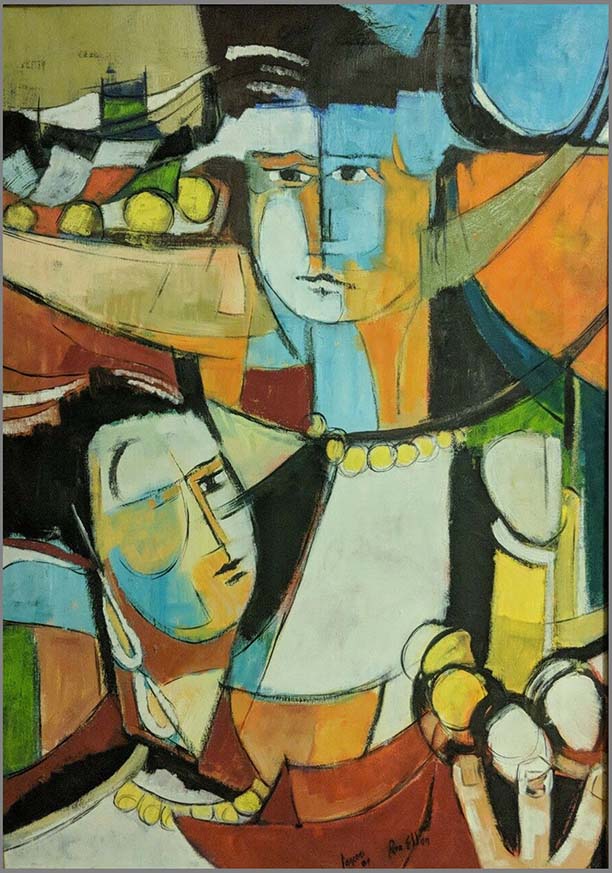

DINO MARIO FANCONI
"VENDEDOROS DE FRUTOS"
OIL ON CANVAS, SIGNED, TITLED
HONDURAS, DATED 1984
27 X 19 INCHES
He was born on June 20, 1950 in Tegucigalpa, Honduras. He completed his elementary studies at the Lempira de Comayagüela school where, with the help of his teachers, he developed artistic skills at an early age. One memory he has is that when he was in his last year there was a contest under the patronage of the National School of Fine Arts in which the first three places were going to have the opportunity to get to know the academy, its works and how things worked inside. This experience was of vital importance for Fanconi to dedicate his life to art. Fanconi returned to the academy at the age of 24 and in just two years as a student graduated with a specialty in painting, pastels, charcoal and watercolor. Dino Fanconi has a degree in Artistic Engraving obtained in Costa Rica. Within the curriculum of the artists, he highlights that he was director of th National school of Fine Arts (Hondures) from 1983 to 19911983 to 1991 and that many of his works have been exhibited outside the country, in the United States and some countries of Latin America. WorkAs a young man he was known for his landscapes and his molded works but while studying at the academy he was especially influenced by his teacher Ivonne Marcheti and the teacher Rosendo Lobo was getting to know new fields of art such as painting with pastels and watercolor, I mention these two because they have outstanding works. Fanconi's works are characterized by having bright and strong colors but if you look at the expression of their faces they seem tired and even serious making a contrast between the state of the environment and the protagonist, also has paintings with colder and darker oils with the same with the same face. To know what avant-garde trend Fanconi belongs to, it is enough to look at his work and his geometric figures and this style is well evidenced in his most famous work "La doma de la Fiera". He is considered one of the best exponents of cubism in Honduras, although his paintings also have features of expressionism because the faces he draws reflect emotions such as sadness, worry and amazement. In one of his works he pays homage to the Ecuadorian expressionist Oswaldo Guayasmin
|